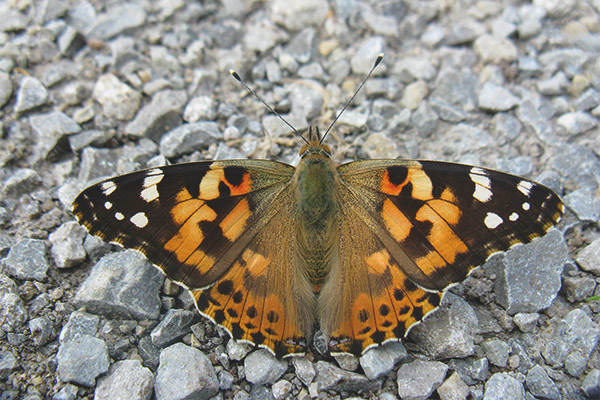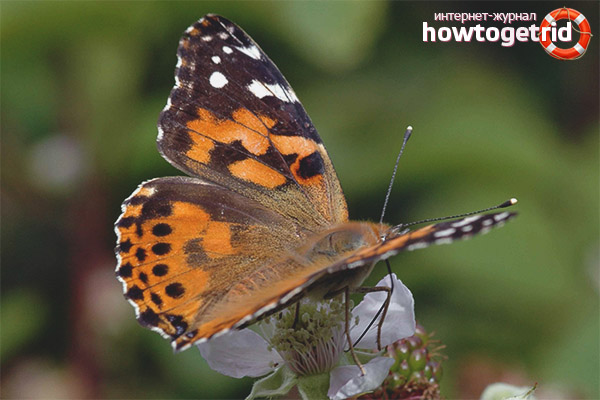The content of the article
Butterfly burdock has a significant external similarity with a similar individual - a butterfly urticaria. The color of these insects is practically no different. However, the individual in question has lighter tones. In addition, the burdock is present on the hind wings of a black blotch.
Description
- As for the length of the body, in the presented insects it does not exceed 3 cm. The wingspan can reach 6.5 cm. The wings and the body itself can have different shades of orange. They can be from bright brick to gray.
- On the bright background of the wings there are symmetrical spots of white and black color. In addition, their intensity may decrease as they approach the rear. Most often in front it may look like a white-black rim. Behind the already observed interspersed.
- With regard to sexual differences, the females from the males is almost impossible to distinguish.The problem is that insect sexual dimorphism is not pronounced.
Habitats
- As for the habitat of the individual, it is really impressive. Such butterflies are spread all over the world. Individuals can not be found only in Antarctica and South America. As for the northern border, butterflies are distributed even to the tundra.
- However, in such areas individuals do not breed, for these purposes they migrate to more southern regions. There are also confirmed studies that in some cases insects fly into even the northern islands, such as Kolguev, Iceland and Spitsbergen.
- In other cases, you can select the main habitat of insects. They prefer moist places with dense vegetation. Often it can be the outskirts of fields, forest edges, roadsides, grass meadows, summer cottages and coastal areas of water bodies.
- In addition, butterflies are found even on the slopes of mountains and hills. Insects can feel great at an altitude of 3 km. above sea level. However, in any case, individuals prefer sunny places, where there is the least shadow.
Nutrition
- As soon as the caterpillars are born, they begin to devour various weeds. Most often, insects can feast on burdock, thistle, coltsfoot, yarrow, field thistle and burning nettle.
- It is worth noting that in the southern regions, especially at the time of the heat, such caterpillars seriously lean on eggplants, tomatoes, melons and soybeans.
- As for mature insects (imago), they prefer only the nectar of flowering plants. Therefore you should not be surprised if you can observe beautiful butterflies in the garden. They will sit on asters, kosmey and beskonnik.
Lifestyle
- It is worth noting that individuals belong to excellent flyers. Before migrating, insects simply gather in huge flocks. In one there may be more than 1 thousand butterflies of this kind.
- As for the direction of migration, then there are only two types. As soon as spring arrives, the insects fly out of North Africa and go to Europe.
- Accordingly, with the onset of autumn, the route for butterflies is the opposite.There are also seasonal flights that can be observed in North America and Asia.
Breeding
- The burdocks are no different from other butterflies. They can also observe a complete transformation cycle. This concerns the fact that insects are originally an egg. After this, a caterpillar, a pupa, and finally an imago appear.
- It is worth noting that these insects can winter, if the temperature remains positive. More specifically, such a lifestyle butterflies predominantly lead to the southern regions. As for habitat in the middle lane, the insects winter in the form of pupae.
- If adult insects accidentally encounter a negative temperature, they immediately die. As a result, the life expectancy of butterflies varies greatly depending on the region of residence. In the middle zone, butterflies bring offspring around the beginning of summer.
- Just a few days after laying eggs, the caterpillars hatch, which are small and black in color. In addition, they can see whitish hairs. The insect immediately starts feeding.
Individuals do not cause any harm to humans.On the contrary, the caterpillars begin to devour weeds and similar plants. Only in rare cases can they harm the crop. Because of the climate change in some regions, butterflies are dying out massively, so if you do not correct the situation, insects will die out.












To send